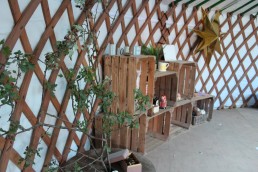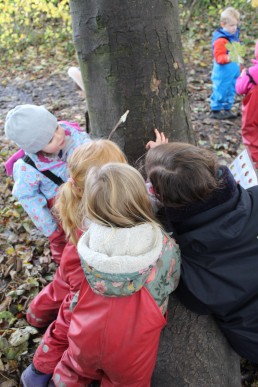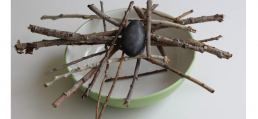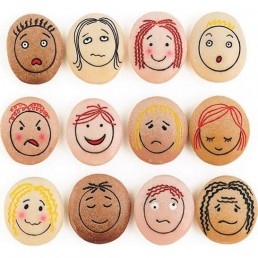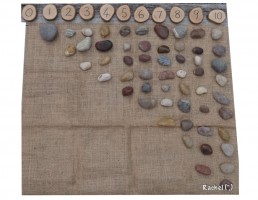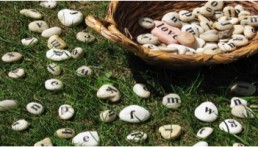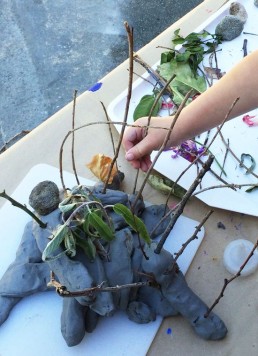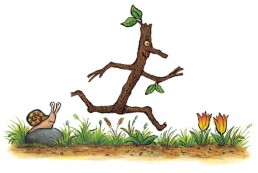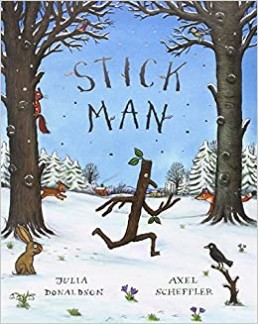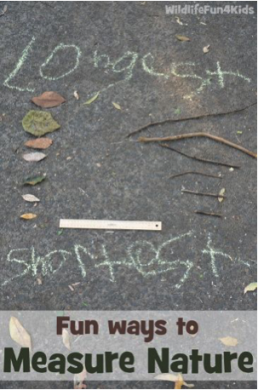Pre-School at Horsforth
Happy New Year to everyone, it sure has been an eventful start to the year as we continue to tackle a pandemic with 3 inches of snow thrown in to test us. But hope and positivity prevails, and we really valued your responses to our previous blog on the little steps we can all take to create a more sustainable year.
We thought we would start the year of blogs by taking a look at our Pre-School Settings across Horsforth and Adel. Currently our Pre-School bubble at Horsforth has closed, so for those affected we are posting daily activities and zooms for the children, you can find all the information you need on Tapestry.
We start by looking back at 2018- the time we implemented the Reggio Approach into our classrooms, changed our name from Dolphins to Inspirations, and rebuilt our entire Pre-School area. This change meant moving the Toddler Room into the old Pre-School room, opening up a second Baby Room, and building a Yurt, Outdoor Class Room and Art Studio on the patch of un-used grass land behind our nursery.
Our Yurt



Flattening the land for our Mongolian Yurt was quite the task, over the spring months of 2018 the changes were finalised and after calling in help from some of our parents, together with Colin the Yurt was erected in just a couple of days. The Yurt is a unique space and feature at Inspirations that provides just one of many learning areas for our Pre-School children. It is a cosy space to warm up in adverse weather and to eat their meals during winter. The yurt is filled with literacy areas, maths areas, open ended resources and books for reading and researching. See more about our Yurt here- http://simonr30.sg-host.com/our-yurt/
Outdoor Classroom



Our children are predominantly outdoor learners, and our outdoor classroom is a constantly changing space that matches the children's interests and mirrors seasonal changes. Adapting our classroom to match their interests invites our curious young minds to explore and discover, and is the perfect space for them to unleash their creativity.
No Fear of Failure
Throughout our Pre-School areas room Reggio Emilia is of course the guiding principle, and our spaces reflect that. Our Project based approach provides the backbone of their learning, so it is important that our environment and educators support their creative thought process without any fear of failure.
Exciting News
 This January are excited to announce a brand new Room Leader for our Pre-School room. Jennie is an experienced Reggio inspired Early Years Educator who over the course of the last 15 years has worked in Dubai, Japan, Angola and Vietnam and has been to Reggio Emilia three times. We’re very excited that she has joined our team and brings her passion for our pedagogy and supporting children through child- led learning. Her email address is jennie@inspirationsnurseries.co.uk if you would like to get in touch.
This January are excited to announce a brand new Room Leader for our Pre-School room. Jennie is an experienced Reggio inspired Early Years Educator who over the course of the last 15 years has worked in Dubai, Japan, Angola and Vietnam and has been to Reggio Emilia three times. We’re very excited that she has joined our team and brings her passion for our pedagogy and supporting children through child- led learning. Her email address is jennie@inspirationsnurseries.co.uk if you would like to get in touch.
If you’re interested in your child joining our Pre-School over 3’s room please take a look at our website and get in touch with Kayleigh@inspirationsnurseries.co.uk.
 In next weeks blog we will be taking a look at our Pre-School setting over at Adel. In the mean time stay safe in the snow and please do send in any photos you have out exploring the weather. We will select some highlights to share on our social media this weekend.
In next weeks blog we will be taking a look at our Pre-School setting over at Adel. In the mean time stay safe in the snow and please do send in any photos you have out exploring the weather. We will select some highlights to share on our social media this weekend.
"We value space to create a handsome environment and its potential to inspire social, affective and cognitive learning. The space is an aquarium that mirrors the ideas and values of the people who live in it" -Loris Malaguzzi
- Nathalie
The Benefits of Forest School
At Inspirations we value greatly our outdoor environments which are extensive and include the use of our local Horsforth woodland at Hunger Hills. Our passion for outdoor learning and forest school comes from a deep understanding and appreciation for the ethos. The pedagogy was developed in Sweden in the 1950’s and the approach focuses on the natural environment being utilised, not only as an area where children can blow off excess energy but more importantly where children are given the opportunity to immerse themselves in nature.

http://simonr30.sg-host.com/our-settings/forsest-school/
Forest school children develop an appreciation and deep seated love of nature and are able to explore and learn from all that the environment has to offer, at a pace that suits them.
'Lead their own Learning'
The forest school ethos allows for each individual child to lead their own learning journey. They find their own pace, interests and methods of learning and attainment that best suit them. There is no pressure, no preconceived results, no adults determining a beginning or end to their project or interest.
Adults of course play a vital role one which is supportive and patient, they build strong positive relationships which children know they can trust and count on. The Adults help children take managed risks encouraging children to consider, they ask questions and encourage with a hands-on approach which helps supports critical thinking.


Resilience and Determination
Forest school children are shown to be ahead of their peers by the time they start school at the age of five. They show confidence, are very willing to ‘have a go’ and not be deterred by failed attempts. They are resilient and eager to keep trying until they find a positive solution to a problem. It is shows they are effective problem solvers who work well within a team, exhibiting high levels of motivation and concentration to any task facing them.
The forest learning environment also creates strong communicators and gives children a deep level of understanding about the word around them. They are socially advanced, understanding feelings and consequences of their behaviour and are more likely to think before they act. Naturally children who spend time in wide open spaces where the floor is uneven, who have trees to climb and weather to navigate are more confident in their own physical abilities. They are more prone to want to be outdoors as adults and as a result are more healthier, happier individuals.


There are several studies on the benefits of forest school and outdoor learning philosophy. These studies are becoming more prevalent as the ethos has slowly become more popular. Below are a few links to the most recent studies showing the benefits mentioned in our blog above.
https://www.forestschoolassociation.org/new-research-a-longitudinal-study-on-forest-school/
- Nicola

Stick and Stone Balancing Activity
Resources – Sticks, a stone and a bowl
Implementation
Use your problem solving and fine motor skills to lay your sticks out and balance the stone so it doesn’t fall through into the bowl. As a challenge limit the amount of sticks and use a smaller stone!
Intent – Learning goals
Characteristics of Effective Learning
Playing and Exploring –
Being willing to ‘have a go’
- Initiating activities
- Seeking challenge
- Showing a ‘can do’ attitude
- Taking a risk, engaging in new experiences, and learning by trial and error
Active Learning –
Being involved and concentrating
- Maintaining focus on their activity for a period of time
- Showing high levels of energy, fascination
- Not easily distracted
- Paying attention to details
Keeping on trying
- Persisting with activity when challenges occur
- Showing a belief that more effort or a different approach will pay off
- Bouncing back after difficulties
Enjoying achieving what they set out to do
- Showing satisfaction in meeting their own goals
- Being proud of how they accomplished something – not just the end result
- Enjoying meeting challenges for their own sake rather than external rewards or praise
Creating and Thinking Critically
Having their own ideas
- Thinking of ideas
- Finding ways to solve problems
- Finding new ways to do things
Making links
- Making predictions
- Testing their ideas
Choosing ways to do things
- Planning, making decisions about how to approach a task, solve a problem and reach a goal
- Checking how well their activities are going
- Changing strategy as needed
- Reviewing how well the approach worked
Feelings Stones
Resources: Stones, pens/paint
For the body- Clay, mud, play dough or sticks
Implementation
In these unprecedented times we are all aware how important it is to be extra aware and look after our well being. Your children could use play dough to make a body and parents or children could draw pictures of a range of emotions on stones, so then each day your child can choose how they are feeling and talk about that emotion and the reasons why.


Intent- Learning Goals
Personal Social and Emotional Development – Managing feelings and behaviour
22-36 months
- Can express their own feelings such as sad, happy, cross,scared, worried.
30-50 months
- Aware of own feelings, and knows that some actions and words can hurt others’ feelings.
Personal Social and Emotional Development – Self confidence and self awaremess
22-36 months
- Expresses own preferences and interests.
30-50 months
- Can select and use activities and resources with help.
- Welcomes and values praise for what they have done.
- Enjoys responsibility of carrying out small tasks.
- Shows confidence in asking adults for help.
40-60 months
- Confident to speak to others about own needs, wants, interests and opinions.
- Can describe self in positive terms and talk about abilities.
Communication and Language – Speaking
22-36 months
- Uses language as a powerful means of widening contacts, sharing feelings, experiences and thoughts.
40-60 months
- Uses talk to organise, sequence and clarify thinking, ideas, feelings and events.
Impact
How did this activity go? Please use this space to record any findings, adaptions, reflections and quotes from your children. We would love you to email them back to us or share them on Tapestry, Instagram or Facebook.
Matching Quantity to Numerals
Resources: Stones, pens, numbers
Collect up all those stones you find on your walks and match them to the numbers. You can write the numbers on a piece of paper or use any numbers you have. As an extension you could continue to 20.


Intent- Learning Goals
Maths - Numbers
30-50 months
Recites numbers in order to 10.
- Knows that numbers identify how many objects are in a set.
- Beginning to represent numbers using fingers, marks on paper
or pictures.
- Sometimes matches numeral and quantity correctly.
- Shows an interest in number problems.
- Shows an interest in representing numbers.
40-60
- Recognise some numerals of personal significance.
- Recognises numerals 1 to 5+
- Counts up to three or four objects by saying one number name for each item.
- Counts objects to 10, and beginning to count beyond 10.
- Counts out up to six objects from a larger group
Impact
How did this activity go? Please use this space to record any findings, adaptions, reflections and quotes from your children. We would love you to email them back to us or share them on Tapestry, Instagram or Facebook.
Letter Stones Activity
Resources- Stones, Pens or paint
Implementation
Go on a scavenger hunt in the beautiful sunshine for more stones. Children can practise their name by matching the letter stones to a written name card. If they already know how to form their name they can make it with the stones independently. The stones can be further used to make other names your children may know such as mummy or daddy, or a sibling’s name or even a favourite story character’s name copied from a book, e.g. Stick Man or Stanley! You could muddle up some familiar names or words for your child to form correctly. Your children may be able to copy or independently form other familiar or significant words and simple sentences using the stones, or even order the stones alphabetically.

Intent- Learning Goals
Literacy – Reading
30-50
- Recognises familiar words and signs such as own name and advertising logos.
40-60
- Hears and says the initial sound in words.
- Links sounds to letters, naming and sounding the letters of the alphabet.
- Begins to read words and simple sentences
Literacy – Writing
40-60
- Uses some clearly identifiable letters to communicate meaning, representing some sounds correctly and in sequence.
- Writes own name and other things such as labels and captions.
- Attempts to write short sentences in meaningful contexts.
Impact
Please use this space to record any findings, adaptions, reflections and quotes from your children. We would love you to email them back to us or share them on Tapestry.
Activity 5- Stick Models
Resources: Sticks and home made play dough or messy but fun naturally sourced mud or clay.
Easy make at home play dough recipe: https://www.youtube.com/watch?v=jv73CEzY1jg
Implementation
To extend on your 2D stick shapes, have a go making 3D shapes or models using your sticks and playdough/mud to hold them together.
You may have your own ideas of what works best for you
that you can also share with us.
What would you like your model to look like?
What you will use?
How will you? What else might work? What could you do differently?
What could you add? What does it remind you of?
Can you tell me about your model?
Intent
Characteristics of Effective Learning – Creating and Thinking Critically
Having their own ideas
- Thinking of ideas
- Finding ways to solve problems
- Finding new ways to do things
 Making links
Making links
- Making links and noticing patterns in their experience
- Making predictions
- Testing their ideas
- Developing ideas of grouping, sequences, cause and effect
Choosing ways to do things
- Planning, making decisions about how to approach a task,solve a problem and reach a goal
- Checking how well their activities are going
- Changing strategy as needed
- Reviewing how well the approach worked
Maths – Shape Space and Measure
22-36 months
- Notices simple shapes and patterns in pictures.
30-50 months
- Shows an interest in shape and space by playing with shapes or making arrangements with objects.
- Uses positional language.
- Shows interest in shape by sustained construction activity or by talking about shapes or arrangements.
- Uses shapes appropriately for tasks.
40-60 months
- Beginning to use mathematical names for ‘solid’ 3D shapes and ‘flat’ 2D shapes, and mathematical terms to describe shapes.
- Uses familiar objects and common shapes to create and recreate patterns and build models.
Expressive Arts and Design – Exploring using Media and Materials
30-50 months
- Uses various construction materials.
- Beginning to construct, stacking blocks vertically and horizontally, making enclosures and creating spaces.
- Joins construction pieces together to build and balance.
40-60 months
- Understands that different media can be combined to create new effects.
- Manipulates materials to achieve a planned effect.
- Constructs with a purpose in mind, using a variety of resources.
- Selects appropriate resources and adapts work where necessary.
- Selects tools and techniques needed to shape, assemble and join materials they are using.
Impact
Please use this space to record any findings, adaptions, reflections and quotes from your children. We would love you to email them back to us or share them on Tapestry.
Home School Activity 3- Make Your Own Stick Man
Implementation
Resources: Sticks
Use the different sized sticks you’ve collected to make a Stick Man.
How will you join them together?
What could you use for his eyes?
Take a photograph of your Stick Man and share it with us!
Intent- Learning Objectives
Moving and Handling
22-36 months
- Shows control in holding and using jugs to pour, hammers, books and mark-making tools.
- Beginning to use three fingers
30-50 months
- Uses one-handed tools and equipment
40-60 months
- Uses simple tools to effect changes to materials.• Handles tools, objects, construction and malleable materials safely and with increasing control.
Literacy
22-36 months
- Has some favourite stories, rhymes, songs, poems or jingles
30-50 months
- Describes main story settings, events and principal characters.• Shows interest in illustrations and print in books and print in the environment.
40-60 months
- Uses vocabulary and forms of speech that are increasingly influenced by their experiences of books.• Enjoys an increasing range of books.
Being Imaginative
22-36 months
- Beginning to use representation to communicate, e.g. drawing a line and saying ‘That’s me.’
30-50 months
- Captures experiences and responses with a range of media, such as music, dance and paint and other materials or words.
40-60 months
- Creates simple representations of events, people and objects.
Exploring and using media and materials
30-50 months
- Joins construction pieces together to build and balance.• Realises tools can be used for a purpose.
40-60 months
- Understands that different media can be combined to create new effects. • Manipulates materials to achieve a planned effect.• Constructs with a purpose in mind, using a variety of resources.• Uses simple tools and techniques competently and appropriately.• Selects appropriate resources and adapts work where necessary.• Selects tools and techniques needed to shape, assemble andjoin materials they are using.
Technology
30-50 months
- Knows how to operate simple equipment, e.g. turns on CD player and uses remote control
Impact-
How did this activity go? Please use this space to record any findings, adaptions, reflections and quotes from your children. We would love you to email them back to us or share them on Tapestry, Instagram or Facebook.
Story Time- Open ended Question ideas
This applies to all books you may be reading with your children, not just stickman.
Looking at the Cover
Can you find the Front Cover?
What can you see on the front cover?
What might this book be about?
Can you find/point to the title?
What might happen in the story?
Parent can read the title and ask again what might happen.
Talk about the Author/Illustrator and any related books
Inside the Book
What is happening on this page?
Can you turn the next page?
How do you think the character feels? Why?
How would you feel?
What might happen next?
Do you know what that word means?
What might happen at the end of the story?
When Finished
Can you remember the characters in the story?
What happened in the story?
What happened to this character in the story?
What did you find out?
Did you like this book…why?
What was your favourite part?
Who was your favourite character?
Can you re-tell the story in your own words?
Do you like how the story ended?
Can you think of another way the story could have ended?
We suggest your child listens to the story with you many times over a week and is able to look at the book/video independently when chooses to. Your child will become familiar with the story, characters, depth of the story messages, rhyme and phrases, illustrations and even letter/word recognition. Hopefully they will be able to retell the story, talk in more detail about the characters and their feelings/actions, use their imagination to change parts of the story or rhyme, draw simple representations of the characters or main events, role play the story, copy words/label pictures from the story or share retelling with younger siblings.
https://www.youtube.com/watch?v=6FlKIjVeNY0&t=18s
Home School Activity 2: Sticks
Resources: Sticks
Implementation
We see a lot of you found sticks during your scavenger hunt, so using these sticks, encourage your children to look at the sizes of them and ask what they can see.
 Support them if necessary to place the sticks into size order using mathematical language of size and length, long, short, biggest, smallest, medium etc.
Support them if necessary to place the sticks into size order using mathematical language of size and length, long, short, biggest, smallest, medium etc.
Extension – using a stone, hands, Lego or what your child believes would be appropriate, (trial and error and problem solving) you could measure the sticks and record your findings with any representation suitable with your child’s ability, such as drawing pictures, taking photographs, writing digits.
Intent- Learning Objectives-
Here's what your children will get out of this activity, within their age brackets.
Maths- Shape, Space and Measure
22-36 months
- Beginning to categorise objects according to properties such as shape or size.
- Begins to use the language of size
30-50months
- Uses positional language.
40-60 months
- Orders two or three items by length or height
PSED – Personal, Social, Emotional Development
30-50 months
- Can select and use activities and resources with help.
- Welcomes and values praise for what they have done.
- Enjoys responsibility of carrying out small tasks.
- Shows confidence in asking adults for help.
40-60 months
- Confident to speak to others about own needs, wants, interests and opinions.
- Can describe self in positive terms and talk about abilities.
Impact- Please use this space (or a sheet of paper) to record any findings, adaptions, reflections and quotes from your children. We would love you to email them back to us or share them on Tapestry.
Happy Measuring.
The VIN Team (Virtual Inspirations Nursery)
